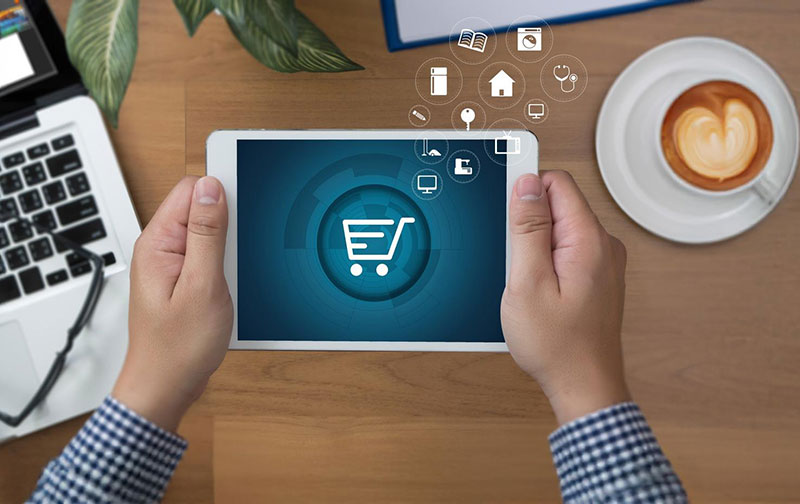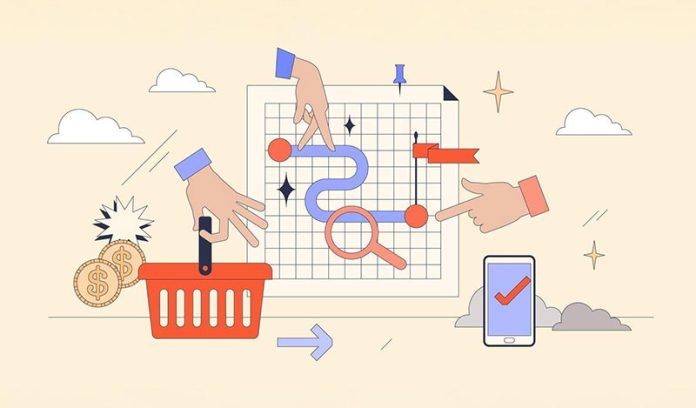By Frank Cespedes and Georg Krentzel
Companies need digital technologies in an omni-channel buying world where online and in-person interactions are complements, not either / or substitutes. Multi-channel hybrid sales solutions are required, but what are the key requirements for using the available technology for competitive advantage?
What options does digital technology offer us in order to gain competitive advantage in hybrid sales channels? Based on work with companies, we see lessons from dealing with a humble but pervasive retail outlet: convenience stores and small eating / drinking venues. In the United States, 8 out of 10 people visit weekly one or more of 150,000 convenience stores, 65 per cent of which are independent and not part of a chain such as 7-Eleven or Circle K. The U.S. has one such outlet for every 2,200 people, and the channel is even more important in other countries. In Mexico, there are 800,000 outlets (one for every 160 people), and in Europe the ratios are similar (e.g., Italy has about 350,000 small restaurants, bars, and hotels).
This is a fragmented and high-cost-to-serve channel, but for CPG (consumer packaged goods) companies, these outlets generate up to 50 per cent of their revenue in many countries. Sales productivity is key here and three capabilities are crucial:
Design capability. Begin by answering a core question: What is the role of channel partners in your strategy and the customer buying journey? Is it primarily about cost efficiency: a channel partner can perform important tasks less expensively than your firm can? Or does that partner provide access to certain segments? Or is the partner a necessary part of the solution that customers buy because it provides important complements (e.g., other products or a value-added feature)? These roles have different implications for required interactions and relevant tools.
For instance, about 25 per cent of U.S. apparel shoppers visit Amazon early in their buying journey, but most buy elsewhere. This suggests that online channels are important for search and discovery, but less so for product evaluations and purchase. Moreover, omni-channel customers in this category spend a third more annually than offline-only shoppers. A hybrid solution here should reflect the interactions between online and brick-and-mortar channels for these high-value customers.

The relevant digital investments should also reflect your go-to-market approach. U.S. convenience stores stock up to 3,000 items in as many as 400 categories. “BevCo” delivers direct. Its investment in a proprietary digital sales platform enables retail customers to order at their convenience, receive product information, access their last order and payment details, and track delivery to plan the arrival of goods. The platform allows BevCo to recommend products and stocking levels based on store-specific analyses of buying patterns, complementary products, and the margins to BevCo and the retailer. These recommendations are now constantly refined via AI tools that help BevCo and retail partners target promotions to consumers. The result has been better consumer retention plus increases in average ticket value and purchase frequency.
In contrast, “CPG Co” sells through distributors and its smaller retail customers use distributor platforms for orders. So, CPG Co uses digital tools to promote its products on distributor platforms and provide sales and loyalty rewards. Moreover, because the distributors are not exclusive to CPG Co, its sales force must also build relationships with retail accounts. As in many firms, their contact was determined by a routing system of physical visits. But tools for access to real-time data and data sharing with distributors now allow the sales force to better target business-development activities and, via digital communications, increase interactions and touchpoints without a corresponding increase in physical visits. This has brought more agility to the CPG Co distributor-retailer relationship while improving service and cost efficiencies.
Data capability. Hybrid sales solutions are highly dependent on using timely data for relevant business insights. But two issues often impede this capability.
One is siloed systems. For example, BevCo’s legacy systems included online ordering, sales force automation, dispatching and inventory, flanked by Excel files for prices, promotions, stock transfers, and order management — none of which were linked to each other or to the ERP (enterprise resource planning) system. Further, the initiation of a digital transformation project generated a wish list that added even more complexity. The result was costly delays, organizational cynicism about an already time- and resource-consuming process, and loss of market position.
CPG Co avoided this trap by opting for different work streams, such as sales force productivity, distributor connection, and supply chain management, led by the business areas, with a cross-functional team of digital specialists to connect the different solutions. This approach helped to prioritize relevant tools and avoid diffuse investments. For data sharing with distributors, the responsible team first defined the expected output, such as granular understanding of outlet sales to develop fact-based business plans and prioritize sales force activities with distributors. The desired business result shaped selection of the digital tools – i.e., those which facilitated tracking of segment-specific business development activities and calculating the ROI of different trade marketing activities.
Clarifying the outputs also shaped the data sources and type of data manipulations required. More than 40 internal processes were re-engineered in this way and the approach also helped CPG Co to redefine job positions and descriptions. Equally importantly, the approach clarified how the different systems should interact, such as the flow of data between the SFA (sales force automation), CRM (customer relationship management), and sales force routing analytics. This coordination helped to provide a single version of market truth that aided relations between CPG Co sales teams, distributors, and retail outlets.
A second issue is that, even with relevant systems, data has been hard to find in addressing omni-channel buying behavior. But companies providing this data are emerging, such as Roamler or SharpGrid which use big data techniques, and Asseco, UVE, or Mobilvendor in Latin America which link information between outlets, distributors, and manufacturers. These links help in managing the ecosystem required to deal with omni-channel buying and help companies to understand and manage inherent limitations with market data.
CPG Co developed a customer targeting system with a third-party database on food service outlets that provided their turnover, demographic data about each outlet’s area, and information about its opening hours, menu, prices, products and brands. But CPG Co found that only a minority could be converted into customers. Many outlets turned out not to be high potential after review by the sales force, and others already had exclusive agreements with other manufacturers. But the system still provided benefits. It minimized sales time on false-positive targets and so increased time on other opportunities. Better-quality leads improved business development efforts, enabling distributors to fine-tune CPG Co’s offering by outlet type and, in turn, instigated a continuous improvement cycle in manufacturer-distributor–outlet relations.
Better-quality leads improved business development efforts, enabling distributors to fine-tune CPG Co’s offering by outlet type and, in turn, instigated a continuous improvement cycle in manufacturer-distributor-outlet relations.
This final benefit is important. An often-overlooked data capability is making it easier for channel partners to work with your sales teams. If you sell thru broker channels, for instance, low friction and easy communication are often as important as commission dollars in getting brokers’ attention and commitment to your products. Too often, however, sellers ship products to a channel partner but the material and information needed for effective selling are not provided. Here, digital technology is an enabler. The means for establishing and maintaining partner sites that provide content, online demos, deal registration data, and other relevant sales tools are decreasing in cost and increasing in scope. These tools enable partners to leverage your branding, messaging, and demand-generation knowledge in their selling efforts for your products. The rewards of getting this right are significant. As one executive notes, “Nobody does cartwheels for software. The payoff comes in the form of collaboration. We had no way to share ideas and track this across our offices and multiple partners. Now we can. It’s meant a 30 per cent increase in call volume and productive leveraging of the tribal knowledge in this ecosystem.”
Change capability. Many channel arrangements lag market developments. Managers with quarterly metrics often know what their established channels can deliver in the short term, and a change means transition costs. Also, most producers’ accounting systems can measure product profitability but often lack data needed to assess cost-to-serve and profitability by channel. The result is Catch-22: channel inertia enables new entrants, while change risks retaliation or lost support from established channel partners.
The initial decades of the twenty-first century saw this play out in many consumer product categories. Razors, blades, and other items generated high margins for the established suppliers and retailers, and the incumbents faced a choice in responding to entrants like Harry’s or Dollar Shave Club. Cut prices and you cut profits and earnings; develop online channels for your products and you antagonize retail partners. Within five years of Dollar Shave Club entering its market, Gillette had lost about 13 points of market share. Yet when Gillette finally responded by introducing its subscription service, it required customers to sign up with a retailer rather than directly with Gillette. Consumers bought the way they wanted to buy, not how Gillette wanted them to buy.
What can you do to manage change in hybrid sales models? First, specify and keep up to date the levels of quality control required for a channel function – an area where real-time data from digital tools can help. Too often, managers speak of “distribution” as an undifferentiated category in their marketing plans. But distribution always means a set of discrete activities including demand generation, inventory, delivery, after-sale service, and so on. Depending upon buying behavior and your strategy, different activities require different levels of quality control. Some must be performed flawlessly and others just need to be good enough. Effective hybrid selling reflects these differences in channel design and management.
Second, evaluate periodically the options available for shifting a given activity to a different point in the channel. As products mature, suppliers often find that many service and stocking activities which initially required full-service partners can be performed more efficiently and just as effectively by generic service providers or even self-service. It’s usually better to anticipate these shifts rather than react after the fact. BevCo, for example, significantly reduced visits to retail customers with self-ordering features on its platform.

Third, hybrid approaches require the sales organization to change its way of working. Salespeople must develop partnerships with channel players to access data and work with them to implement the approach. This often places more emphasis on account management tasks (“farming” rather than “hunting,” in common sales parlance), being more disciplined in analyses of consumer and channel data, and managing channel contact beyond physical visits. Processes can be redesigned but the challenge is how to change the habits of sales people. BevCo selected a group of their best sales people to train the rest of the team. This helped to build trust and a deeper understanding of specific concerns, and made a more gradual but enduring change possible.
Finally, recognize the trade-offs. No channel manages itself. So consider how many partners you can realistically support and work with. A trade-off between control and resources is inherent in a hybrid multi-channel approach. Don’t deny this trade-off. Instead, consider its implications for the best uses of time, people, and digital tools in your go-to-market programs.
About the Authors
 Frank Cespedes teaches at Harvard Business School and is the author of books on strategy, sales, and marketing.
Frank Cespedes teaches at Harvard Business School and is the author of books on strategy, sales, and marketing.





































